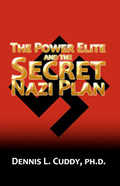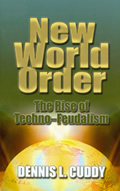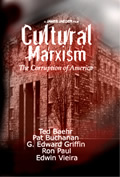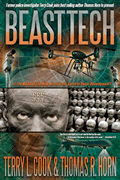COMMON CORE
PART 1
By
Dennis L. Cuddy, Ph.D.
March 2, 2015
NewsWithViews.com
There is a great controversy today over the current educational reform movement known as Common Core (CC). Many people have offered specific criticisms of the movement, but they generally look at CC in isolation. However, it is important to understand the back ground of CC, and a good starting point for that begins with the Illuminati, which began on May 1, 1776.
The fundamental purpose of the Illuminati was to do away with existing authority (e.g., monarchical, religious, etc.) and adopt the principle of its founder, Adam Weishaupt, which was that they, the Illuminati or Enlightened, knew what was best for people. The leaders of CC today also believe they know, even better than parents, what is best in education for children in the United States. Relevant to education, certain members of the Illuminati became tutors to princes, who would then become czars, kings, etc. (e.g., Alexander I of Russia) and be under the influence of the Illuminati.
In terms of what we know today as elementary and secondary education, Illuminati member Johann Heinrich Pestalozzi (a Swiss, code-named Alfred) had the greatest influence. According to Will Monroe's HISTORY OF THE PESTALOZZIAN METHOD IN THE UNITED STATES (1907), the educational ideas of Pestalozzi began to be printed in journals and textbooks in the United States in 1806. They began to be used in some school systems, especially in New England where they were viewed favorably be the intelligentsia of Horace Mann's day. This was the first half of the 1800s, and Mann became known as the "Father of the American Public Education."
Utopian Socialist Robert Owen visited Pestalozzi at Yverdon, Switzerland in 1818, and applied the Illuminist's educational principles in Britain and America. In 1825, Owen established the first commune in the United States in New Harmony, Indiana. Joining Owen in 1828 was Frances Wright (formerly Madame Francoise D'Arusmont from France) who, with Owen's son Robert Dale Owen and Orestes Brownson, formed the Workingmen's Party in New York.
According to A CONCISE HISTORY OF THE AMERICAN REPUBLIC (vol. 1) by Samuel Morison, Henry Steele Commager, and William Leuchtenburg, Frances Wright became "a lecture-platform apostle of...a system which she called 'National, Rational, Republican Education, Free for All, at the Expense of All, Conducted under the Guardianship of the State,' apart from the contaminating influence of parents." After Brownson became a Christian, he revealed in THE WORKS OF ORESTES BROWNSON (20 volumes) that their plan in establishing their political party was as follows: "The great object was to get rid of Christianity, and to convert our churches into halls of science. The plan was not to make open attacks upon religion, although we might belabor the clergy and bring them into contempt where we could; but to establish a system of state---we said national---schools, from which all religion was to be excluded, in which nothing was to be taught except such knowledge as is verifiable by the senses, and to which all parents were to be compelled by law to send their children. Our complete plan was to take the children from their parents at the age of 12 or 18 months, and to have them nursed, fed, clothed, and trained in these schools at the public expense; but at any rate, we were to have godless schools for all the children of the country....The plan has been successfully pursued...,and the whole action of the country on the subject has taken the direction we sought to give it. One of the principal movers of the scheme had no mean share in organizing the Smithsonian Institute."
|
|
Brownson further revealed that the connection between the Workingmen's Party, Robert Owen (father of Robert Dale Owen), Pestalozzi and Horace Mann is very important. In HORACE MANN: EDUCATIONAL STATESMAN, Heidelberg College (Ohio) Prof. E.I.F. Williams wrote: "The 'workingmen's movement' was an organization of the liberals in opposition to the conservative order....Its members were the radical wing of the Jacksonian democracy. In 1831 a large convention (of the Workingmen's Party) made up of farmers and workmen was held in Boston....Leaders such as Horace Mann (in Massachusetts)...urged their cause. Education was advanced as the surest and best method of advancing their aspirations....Labor leaders were enthusiastic about education in tax-supported schools....Education soon took first place among the reforms they demanded. They urged the necessity of an 'equal, universal, republican system of education.'...Reform was the watch-word of the day....More than two hundred communists Utopias were established....For two or three decades, they centered the attention of the country on socialistic and communistic schemes for human betterment. One of the most famous of the communities was established at New Harmony, Indiana by Robert Owen."
� 2015 Dennis Cuddy - All Rights Reserved



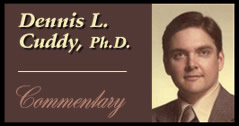


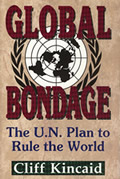






 Share
This Article
Share
This Article